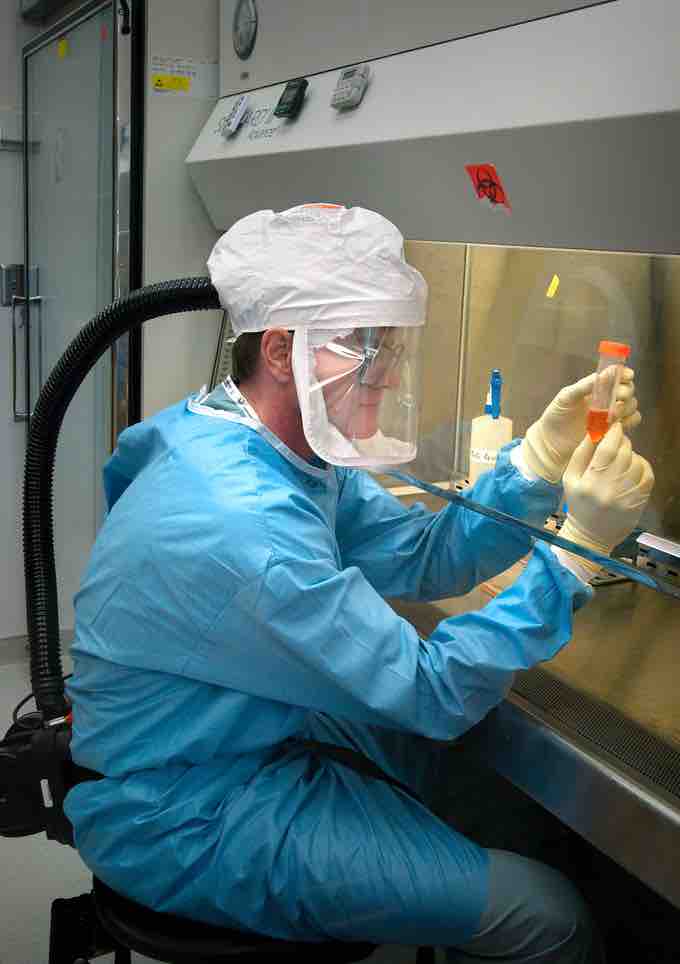Genetic engineering, also called genetic modification, is the direct manipulation of an organism's genome using biotechnology. New DNA may be inserted in the host genome by first isolating and copying the genetic material of interest using molecular cloning methods to generate a DNA sequence, or by synthesizing the DNA and then inserting this construct into the host organism. Genes may be removed, or "knocked out," using a nuclease. Gene targeting is a different technique that uses homologous recombination to change an endogenous gene, and can be used to delete a gene, remove exons, add a gene, or introduce point mutations.
Genetic engineering alters the genetic makeup of an organism using techniques that remove heritable material, or that introduce DNA prepared outside the organism either directly into the host or into a cell that is then fused or hybridized with the host. This involves using recombinant nucleic acid (DNA or RNA) techniques to form new combinations of heritable genetic material, followed by the incorporation of that material either indirectly through a vector system or directly through micro-injection, macro-injection and micro-encapsulation techniques.
In medicine, genetic engineering has been used to mass-produce insulin, human growth hormones, follistim (for treating infertility), human albumin, monoclonal antibodies, antihemophilic factors, vaccines,and many other drugs. Vaccination generally involves injecting weak live, killed, or inactivated forms of viruses or their toxins into the person being immunized. Genetically engineered viruses are being developed that can still confer immunity, but lack the infectious sequences. Mouse hybridomas, cells fused together to create monoclonal antibodies have been humanised through genetic engineering to create human monoclonal antibodies.

Genetically modified viruses
Scientist studying the H5N1 influenza virus to design a vaccine.
The process of genetic engineering involves splicing an area of a chromosome, a gene, that controls a certain characteristic of the body. The enzyme endonuclease is used to split a DNA sequence and to split the gene from the rest of the chromosome. For example, this gene may be programmed to produce an antiviral protein. This gene is removed and can be placed into another organism. For example, it can be placed into a bacteria, where it is sealed into the DNA chain using ligase. When the chromosome is once again sealed, the bacteria is now effectively re-programmed to replicate this new antiviral protein. The bacteria can continue to live a healthy life, though genetic engineering and human intervention has actively manipulated what the bacteria actually is.
Despite the early success demonstrated with the hepatitis B vaccine, no other recombinant engineered vaccine has been approved for use in humans. It is unlikely that a recombinant vaccine will be developed to replace an existing licensed human vaccine with a proven record of safety and efficacy. This is due to the economic reality of making vaccines for human use. Genetically engineered subunit vaccines are more costly to manufacture than conventional vaccines, since the antigen must be purified to a higher standard than was demanded of older, conventional vaccines. Each vaccine must also be subjected to extensive testing and review by the FDA, as it would be considered a new product. This is costly to a company in terms of both time and money and is unnecessary if a licensed product is already on the market. Although recombinant subunit vaccines hold great promise, they do present some potential limitations.
In addition to being less reactogenic, recombinant subunit vaccines have a tendency to be less immunogenic than their conventional counterparts. This can be attributed to these vaccines being held to a higher degree of purity than was traditionally done for an earlier generation of licensed subunit vaccines. Ironically, the contaminants often found in conventional subunit vaccines may have aided in the inflammatory process, which is essential for initiating a vigorous immune response. This potential problem may be overcome by employing one of the many new types of adjuvants that are becoming available for use in humans. Recombinant subunit vaccines may also suffer from being too well-defined, because they are composed of a single antigen. In contrast, conventional vaccines contain trace amounts of other antigens that may aid in conferring an immunity to infectious agents that is more solid than could be provided by a monovalent vaccine. This problem can be minimized, where necessary, by creating recombinant vaccines that are composed of multiple antigens from the same pathogen.